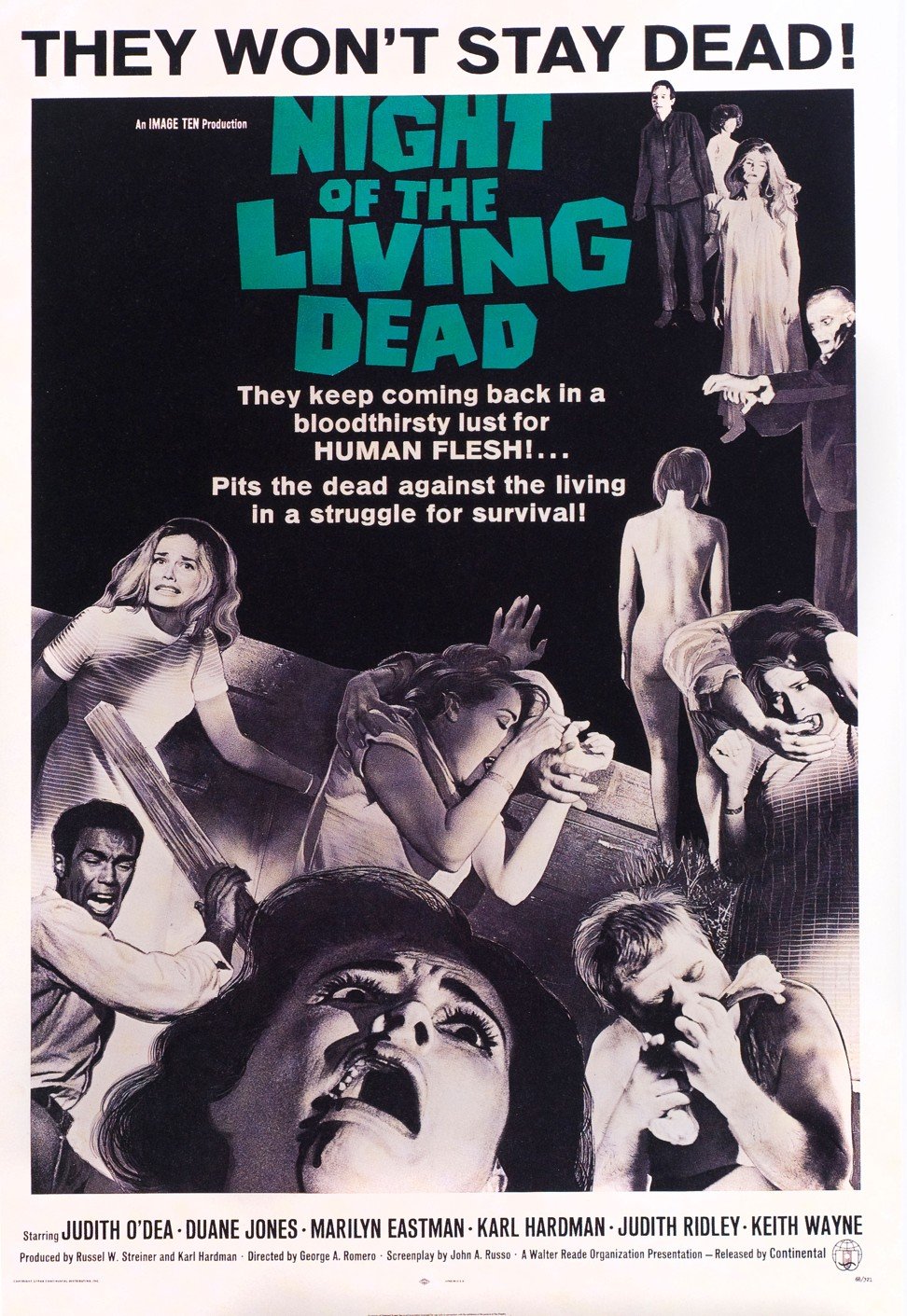
The first zombie movie: 10 classic horror films to celebrate Night of the Living Dead anniversary
On Monday it will be 50 years since director George Romero unleashed the zombie in his low-budget chiller. We remember 10 other films that scared the wits out of cinema-goers, from Rosemary’s Baby to Get Out
“They’re coming to get you, Barbara …”
Monday marks 50 years since director George Romero unleashed the zombie movie on the world with the low-budget horror classic Night of the Living Dead.
Zombie director George Romero honoured with star on Hollywood’s Walk of Fame
He also threw in some social commentary, which became a hallmark of his career – and of horror films in general.
Masked killers and supernatural beasts are cool and all, but they hit home a little more if there’s meaning to go with the malevolence.

In honour of the 50th anniversary of Night of the Living Dead (and since Halloween is on the way), here are 10 other horror films with a conscience.
1. Invasion of the Body Snatchers (1956)
What it’s about: A California town is beset by alien pods that show up and reproduce emotionless clones of the residents (aka “pod people”).
What it’s really about: Xenophobia. The movie’s themes reflected the paranoia during the cold war, specifically the anti-communist feelings of the McCarthy era.
2. Night of the Living Dead (1968)
What it’s about: The zombie apocalypse comes to rural Pennsylvania, and a disparate group of people hole up in a farmhouse to fend off the undead and stay alive.
What it’s really about: Conflict of the times, plus racism. Living Dead came on the heels of the assassinations of Martin Luther King Jr. and Robert F. Kennedy, and amid the Vietnam war, so tensions were high. The African-American hero dies not by a zombie bite but by a redneck’s bullet.
3. Rosemary’s Baby (1968)
What it’s about: A young married couple move into a New York apartment building, the wife becomes pregnant, and she suffers extreme sickness while also beginning to fear for her safety when the neighbours take a strange, excessive interest in the baby.
What it’s really about: Rape culture, feminism and women’s bodies. Rosemary has a dream where she is raped by a supernatural presence, and it turns out she is carrying the son of Satan – which her husband is totally cool with, by the way.
4. Dawn of the Dead (1978)
What it’s about: A mall becomes zombie ground zero for a group of folks who try to form some sort of life within its walls as the creatures attempt to force their way in.
What it’s really about: Consumerism. The thought of zombies at the mall is the obvious metaphor, but George Romero also casts a satirical eye over the culture of human greed with its survivors, who have problems sharing resources as they make the mall their makeshift home.
5. The People Under the Stairs (1991)
What it’s about: A boy and a pair of criminals break into the house of a conservative couple to find a total horror show in the basement, including cannibalistic kids.
What it’s really about: Gentrification, capitalism and classism. The homeowners are greedy Reagan-era types who go to horrifyingly evil lengths to keep poor people down and take their money.
6. Candyman (1992)
What it’s about: A Chicago graduate student looks into murders in an inner-city neighbourhood and the connection to a mythical figure from folklore with a hook hand who appears when you say his name five times.
What it’s really about: Systemic racism and class warfare. The title villain of this slasher film turns out to be a successful son of a slave who was lynched and stung to death by bees after impregnating a white woman in 1890.
7. Tales from the Hood (1995)
What it’s about: An anthology of urban horror stories dealing with gang violence, racism, corrupt police and domestic abuse, which emanate from an inner-city mortuary with a very strange owner.
What it’s really about: see above. Spike Lee executive-produced this African-American tweak on the Tales from the Crypt template, like a racist Southern senator getting his just deserts courtesy of a doll and a dead black politician coming out of the grave to take vengeance on the lawmen who put him there.
8. The Purge (2013)
What it’s about: A suburban family locks down its home with masked psychos just outside on the one night a year where murder and other crimes are perfectly legal.
What it’s really about: Gun culture and fascist governments. The movie’s Purge night originates when a NRA-approved political party comes to power in a dystopian America and goes to extreme lengths to lower the crime rate, and the violence allowed enables ordinary people to unleash their repressed dark sides.
9. The Babadook (2014)
What it’s about: An Australian widow and her young son’s struggles to get by worsen when they’re haunted by a deadly pop-up storybook creature come to life.
What it’s really about: Grief and mental illness. The Bababook is crazy dangerous, but it’s also a metaphor for the breakdown of a mother reeling from depression and the loss of her husband.
10. Get Out (2017)
What it’s about: An African-American photographer visits the estate of his white girlfriend’s parents and figures out to his terror that it’s not just a social call.
What it’s really about: Racism and black identity in America. The protagonist becomes the unwitting participant in a nefarious racket where white people take over the bodies of auctioned blacks, with the latter’s own subconscious forced to watch from the “Sunken Place”.
